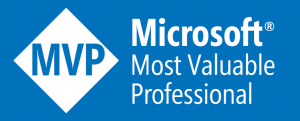Content Strategy: Pillar Pages and Topic Clusters
As you’ve probably learned on your own, publishing one-off blog posts in a vacuum is a recipe for wasted time and flatlining traffic. If you want to win in content marketing today, you need more than just keywords. You need structure. That’s where pillar pages and topic clusters come in.
 This approach turns scattered content into a strategic ecosystem: a hub-and-spoke model that guides your audience through their journey, aligns with your sales goals, and sends strong topical signals to search engines. This latest post in my ongoing Content Strategy series will help you to better structure your content plans. Whether you’re an enterprise marketing team or a scrappy solo founder, this framework can help you to own the topics that matter to your business, rank higher on Google (and stay there), and educate and convert your audience.
This approach turns scattered content into a strategic ecosystem: a hub-and-spoke model that guides your audience through their journey, aligns with your sales goals, and sends strong topical signals to search engines. This latest post in my ongoing Content Strategy series will help you to better structure your content plans. Whether you’re an enterprise marketing team or a scrappy solo founder, this framework can help you to own the topics that matter to your business, rank higher on Google (and stay there), and educate and convert your audience.
If content is fuel, structure is the engine. Let’s break down how to build that engine and keep it running smoothly.
Step 1: Pick Your Content Pillars (3–4 Max)
Start by identifying 3 to 4 core topics that are both relevant to your audience and critical to your business. These are your “pillars”—broad themes with strategic depth that you want to be known for.
Good pillar topics should:
- Have clear business intent (they should align with your product/service lines)
- Be broad enough to support multiple subtopics, but narrow enough to be tackled definitively
- Match how your buyers search, think, and talk
Examples:
- For a marketing agency: “Content Strategy,” “Email Marketing,” “SEO,” and “Marketing Automation”
- For a SaaS platform: “Workflow Automation,” “Team Collaboration,” “Remote Work Culture,” and “Security & Compliance”
If you’re not sure what to pick, ask: “What topics do our customers care about throughout their buying journey?” Then validate with keyword research, competitor analysis, and your sales team.
Choosing your pillars wisely sets the stage for every other content decision. It’s the foundation of a content strategy that supports both discovery and conversion.
Step 2: Build a Definitive Pillar Page for Each Topic
Your pillar page is the hero content—the authoritative, long-form piece that anchors the cluster. It should give a comprehensive overview of the topic, with clear subheads, internal links to related posts, and actionable value.
A great pillar page should:
- Be 3,000+ words (think whitepaper, not blog post)
- Include a table of contents or sticky nav
- Offer clear definitions, frameworks, use cases, and examples
- Link to every relevant cluster post (and be linked back to)
- Include a CTA (ebook, demo, subscription, etc.)
This is not the place to phone it in. You’re staking your claim as the go-to resource on this subject. Make it count.
Step 3: Create 8–12 Cluster Posts Per Pillar
Each pillar should be supported by a series of cluster posts—these are narrower, more targeted articles that explore one aspect of the pillar topic in detail.
For example, if your pillar is “Remote Work Culture,” your cluster posts might include:
- How to Maintain Team Culture When Working Remotely
- Top Remote Work Tools for Async Collaboration
- Managing Burnout in Distributed Teams
- How Leadership Styles Change in a Remote Environment
Each cluster post should:
- Link back to the pillar page
- Use the pillar keyword (or a variation) naturally
- Target a specific long-tail query
- Offer unique, high-quality insights
Cluster content builds topical depth and search visibility while giving your audience entry points based on their specific interests or needs.
Step 4: Add Downloadables, Schema & CTAs
Enhance your pillar with downloadable assets—checklists, templates, calculators, or guides. These not only add value, they also give you a chance to capture leads or show product value.
- Add structured data (schema) to help search engines understand your content hierarchy
- Use jump links or sticky menus for easier UX
- Embed forms, product links, or demos in context—not just at the bottom
These enhancements aren’t bells and whistles—they’re lead generators and conversion accelerators. When designed well, they turn your content from informative to irresistible.
Step 5: Track Coverage Gaps vs. Competitors
Here’s where strategy separates winners from wanderers. Your job doesn’t end with publishing; you must also track what you’ve covered, what you’ve missed, and what your competitors are doing.
Why it matters: SEO success isn’t just about keywords—it’s about topical authority. The more comprehensively you cover a theme, the more likely search engines will reward you.
Every quarter (or at least twice a year):
- Audit your topic clusters—are there emerging trends or subtopics you’ve missed?
- Use SEO tools to compare coverage with your competitors
- Fill any cluster gaps with fresh content
This ensures you stay relevant, competitive, and optimized for both users and algorithms.
Step 6: Refresh Pillars Regularly
Even evergreen content ages. Pillar pages should be treated like products—they need iteration, refinement, and support to stay effective.
Revisiting and refreshing pillar content is one of the simplest ways to:
- Defend rankings against newer competitors
- Improve user experience with updated data and design
- Re-energize distribution with a “new and improved” push
Plan to update your pillars at least once every 6–12 months. Update stats, add new internal links, fix broken references, and reoptimize for shifting search trends.
Think of it as maintenance for your content engine. It’s what keeps performance high without constantly reinventing the wheel.
Why This Works (The ROI of Content Structure)
Let’s break down why this isn’t just good for SEO—it’s good for business:
- Improves rankings: Google rewards topic authority, not scattered keywords.
- Guides buyers: Helps users move naturally from awareness to consideration.
- Increases conversion: Strategically placed CTAs throughout the cluster support funnel goals.
- Eases reuse: Cluster content is easier to repurpose into videos, newsletters, social, etc.
- Supports sales: Sales reps can use pillar pages as trusted resources in follow-ups.
You’ll also reduce internal chaos. No more content calendar guessing games—just focused, purposeful publishing.
For Enterprises, SMBs, and Solopreneurs
This strategy scales up or down:
Enterprises can assign content clusters to specific business units or personas, supported by SEO tools and cross-functional teams. Topic clusters also help avoid duplication and ensure all stages of the buyer journey are addressed.
SMBs can focus efforts by selecting 2–3 high-value pillars that directly support core services or products. This narrows your content priorities and helps stretch smaller budgets with bigger returns.
Solo creators and entrepreneurs may not have the capacity to build out dozens of pages—but starting with one strong pillar and 5–6 supporting posts still builds authority, especially when linked smartly and promoted consistently.
No matter your size, the formula is the same: start with strategy, publish with purpose, and optimize with data.
Ready to turn scattered content into a high-performing system? Organize your next 6 months of content around a topic cluster and measure the difference. Need help picking your pillars or mapping your clusters? I’ve got templates—just ask.




